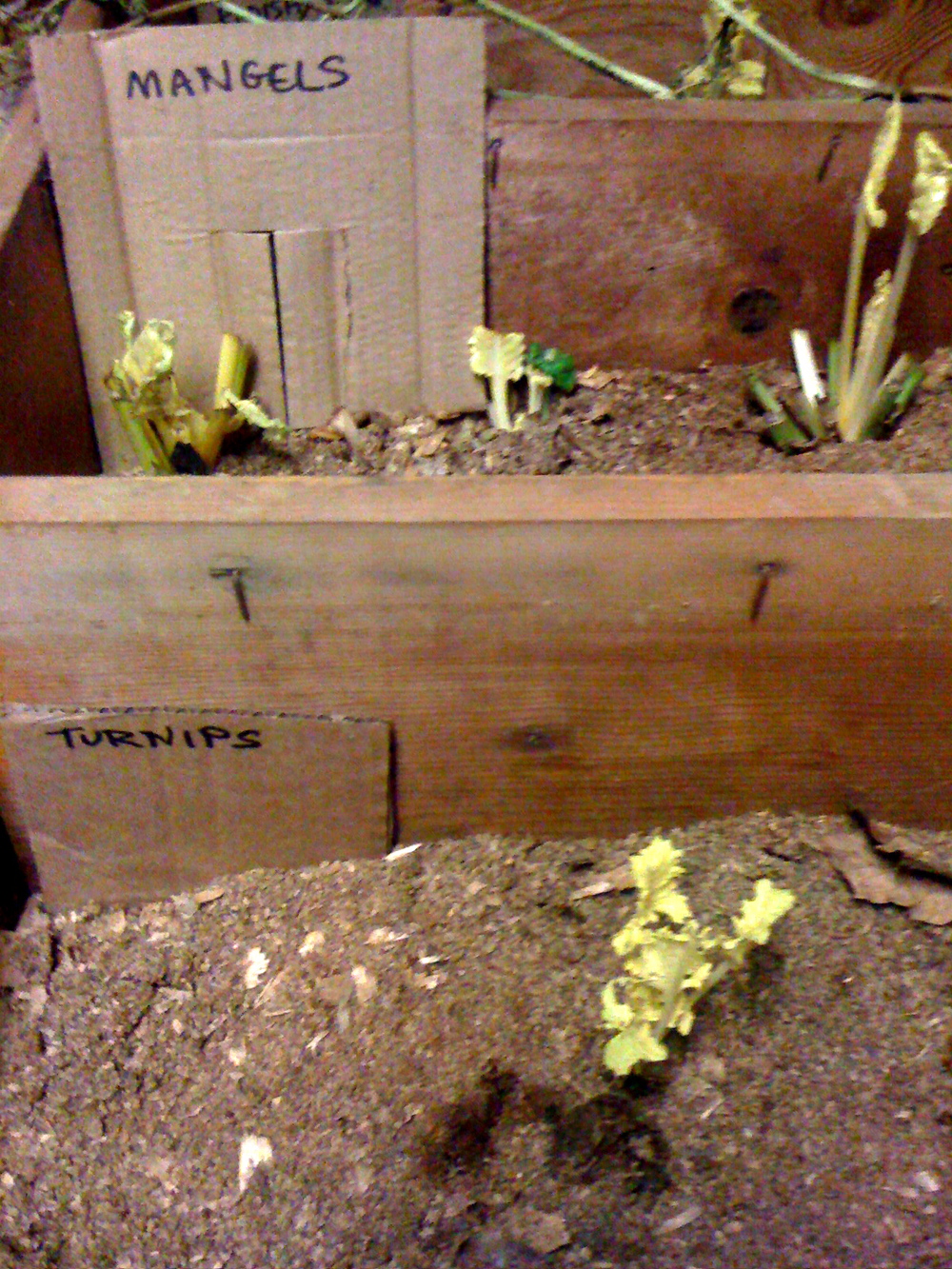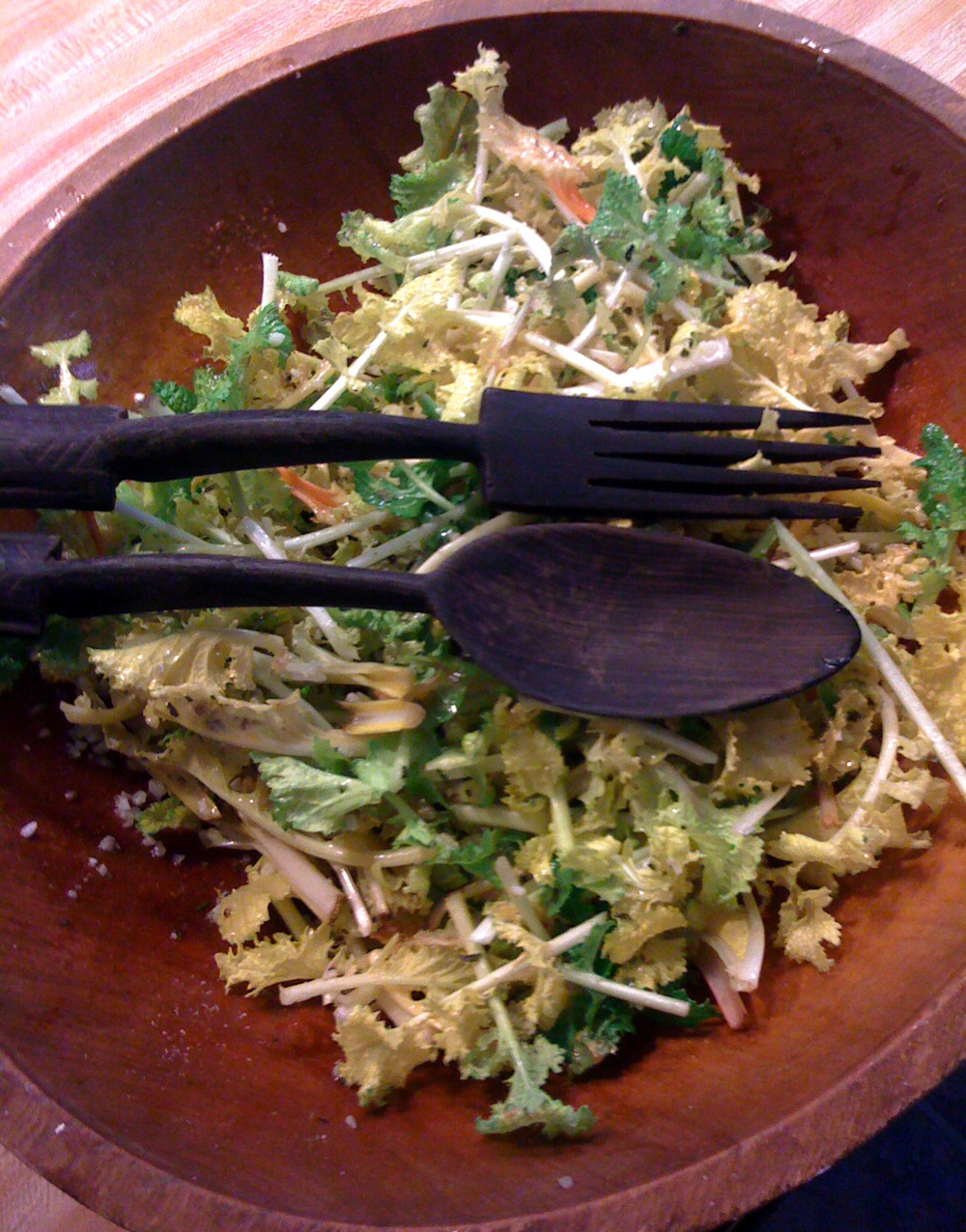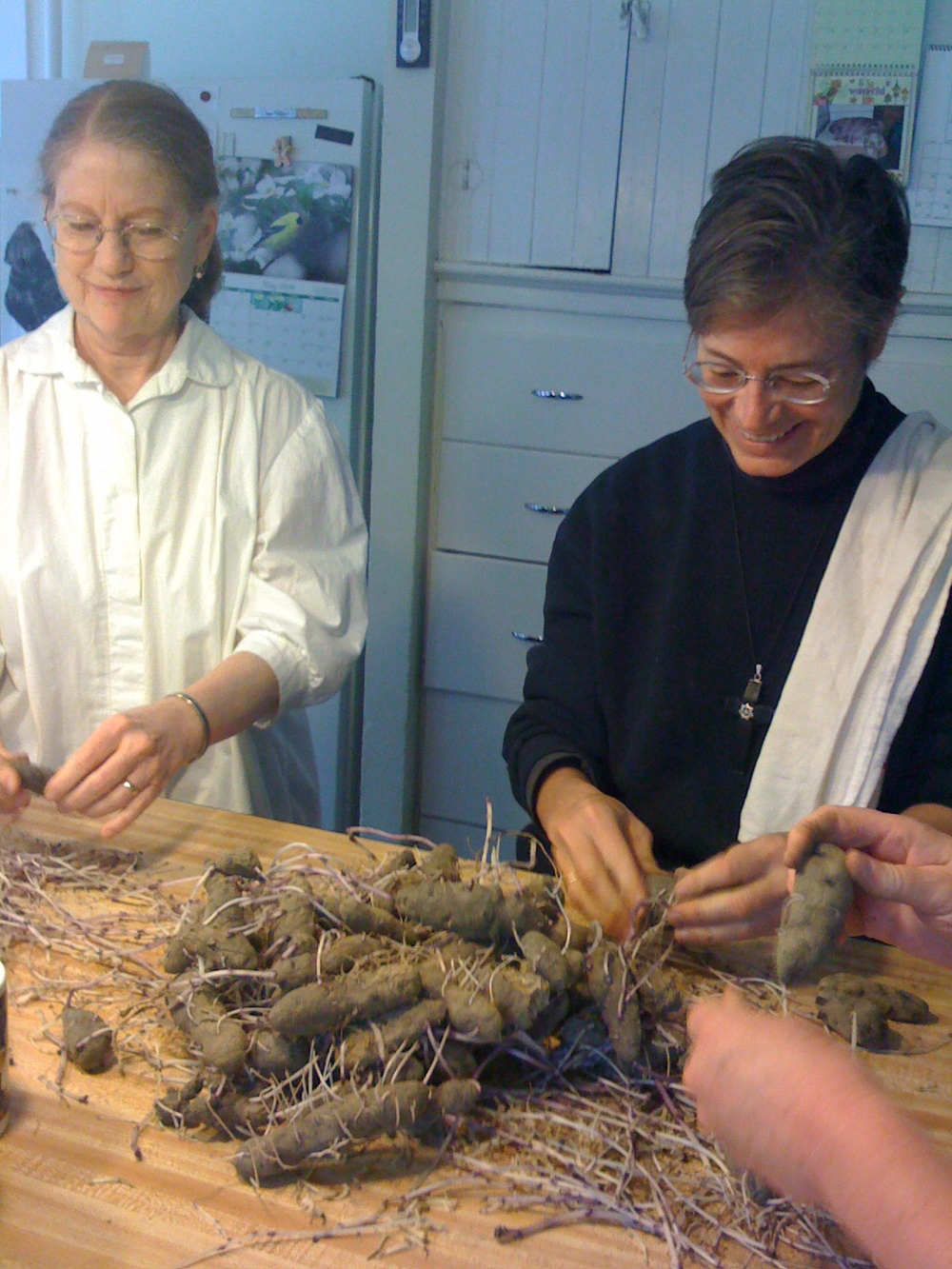 Our root cellar is a thing of wonder: boxes of sawdust and sand filled with roots from the garden: carrots, turnips, parsnips, rutabagas, mangels, and salsify. Parsnips, turnips, and rutabagas are full of flavor, and complement potatoes really well--if you haven't tried them in awhile, it's worth a venture. You can even make mashed parsnips just like mashed potatoes, just with a bit of a peppery flavor. Mangels are related to the beet, and are sweet and delicious. And salsify is like a long, skinny parsnip, with a mild flavor that's great in soups or roasted dishes.
Our root cellar is a thing of wonder: boxes of sawdust and sand filled with roots from the garden: carrots, turnips, parsnips, rutabagas, mangels, and salsify. Parsnips, turnips, and rutabagas are full of flavor, and complement potatoes really well--if you haven't tried them in awhile, it's worth a venture. You can even make mashed parsnips just like mashed potatoes, just with a bit of a peppery flavor. Mangels are related to the beet, and are sweet and delicious. And salsify is like a long, skinny parsnip, with a mild flavor that's great in soups or roasted dishes.
The root cellar is chilly enough that you wouldn't want to slowly browse, but not cold enough to freeze. Imagine: you just run downstairs and grab what you need for the soup, or throw together a pan of veggies to roast.
Gives a new meaning to the word "store."
The roots need watering just about once a week, and the sand and sawdust hold that moisture and keep the roots in good condition. But as you can see from the picture, little greens pop up from the crown of the root, as the plant continues to grow, even under such different conditions.
 And lucky for us.
And lucky for us.
These little root greens are a tasty reminder of the summer that's passed. Sister Carol Bernice, who cultivates the lettuces, went down to the root cellar the other day to harvest. The salad that was made was delicious, with a crisp and a crunch that are hard to find in the wintertime.
Living off what we grow means taking a long view, thinking ahead to how best to preserve food for as long as possible. We use up the roots first, because the cellar can't preserve them indefinitely; then, the foods in the freezer; and finally, the dried, dehydrated fruits and vegetables. We processed these crops as they came in, beginning with the spring peas, which await in the freezer, to give us a taste of May, even in the coldest of winter.
The amount of thought and care that goes into these crops vests them with value, and my close connection to the work that cultivated them means that I see these foods in new ways: in a potato, I see much more than a golden oval starchy root, I see Sister Helena Marie on her knees, "hilling" or pulling dirt over the potatoes in the early stages of their growth; I see Bill spraying the plants with a milk and water mixture, to try to prevent blight; and I see Sister Carol Bernice and Sister Emmanuel out in the garden with potato forks, turning soil to find little treasures, and their smiles when they bring a full basket into the barn. And in the barn, I see Sister Catherine Grace, who heads up our preservation and storage efforts, sorting through the potatoes, leaving them out to cure.
In every stage, there is our hope and our toil. And so we admire what we've cultivated, gathering around the kitchen table, praising the particular yellow-gold of this potato, how easy it is to slice, how delicious it tastes. This love of food--not just as an ingredient for culinary skill, but as part of the amazing diversity and beauty of creation--was one of the first things that attracted me to this Community.
Recently, I saw a sign in a grocery store window advertising 3 pounds of potatoes for $1.00. It was shocking. How could all that effort and care be worth, or even just be exchanged for, only a buck? I know that grocery stores lure people in with cheap staple goods, counting on people buying processed foods at inflated costs when they get inside. But I was saddened, nonetheless, that most of us are so disconnected from the experience of growing food that such a price seems reasonable. How could a farmer make a living selling potatoes at that price? How could they be grown with care and attention, at that price?
The answer is that they can't. Prevention Magazine recently asked the experts which foods they'd never eat, and non-organic potatoes are on the list. Here's why: they're sprayed with fungicides when they're planted as seed potatoes, the plants are sprayed with herbicides during the growing season, and then the potatoes are treated with some other chemical to prevent them from sprouting while they sit in the warehouse or grocery store. That's thrice-doused, not twice-baked. That's a commodity potato, with all the energy going to making each plant produce as much as possible with as little human attention as possible.
 Removing sprouts from shriveled potatoesWe've got a weird expectation that all our food look perfect. I was surprised to learn, for example, that potatoes that have grown long sprouts and are all shriveled up are still perfectly good to eat. You just remove the sprouts, boil them to rehydrate them a little bit, and then cook as normal. But until now, I've always thrown out sprouted potatoes, thinking they were no good. How much food do we all just throw away?
Removing sprouts from shriveled potatoesWe've got a weird expectation that all our food look perfect. I was surprised to learn, for example, that potatoes that have grown long sprouts and are all shriveled up are still perfectly good to eat. You just remove the sprouts, boil them to rehydrate them a little bit, and then cook as normal. But until now, I've always thrown out sprouted potatoes, thinking they were no good. How much food do we all just throw away?
There's a difference, I would argue, between a commodity potato and a potato grown with care. This is why I hope more and more people will start to patronize farmers markets, and get to know the people who are growing your food.
If we can re-establish the connection between the farm and the table, between growing, preparing, and eating food, perhaps we can revitalize the role of family farms in local economies, move toward more nutritious meals, and improve our health through more mindful eating.
To take a minute, and really see our food, to appreciate it, to become nourished by it . . . this is what I'm learning here at the farm, working in the dirt, learning about how food grows.
